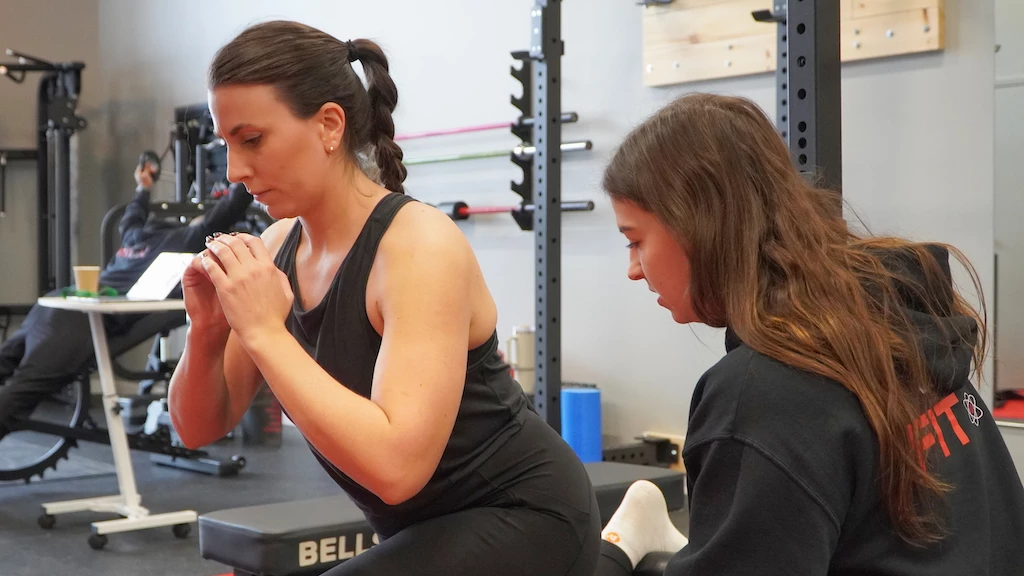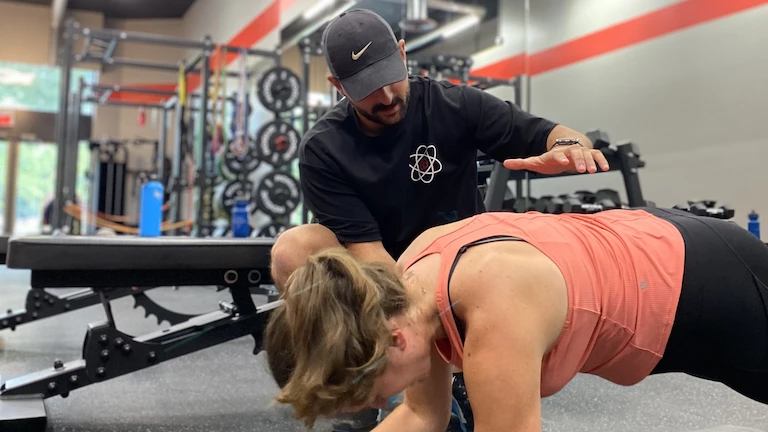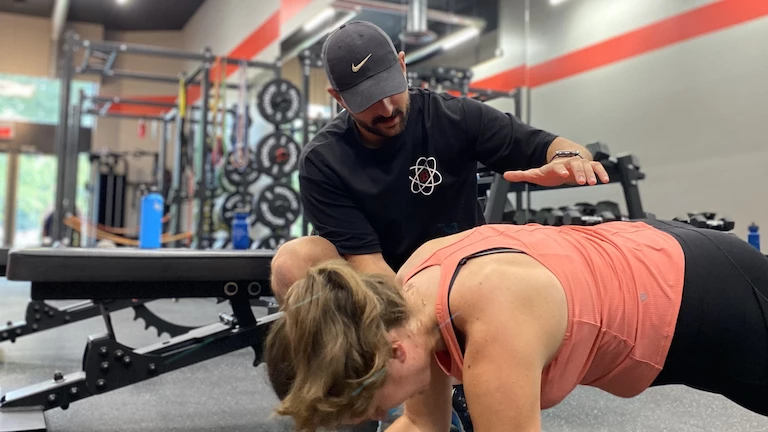High-Intensity Interval Training vs Steady-State Cardio
Studio Fit U
Published: 28/11/2022
Update: 28/01/2025
HIIT training, what is it?
HIIT or "High Intensity Interval Training" is a training method that was invented in the 1900s. It has only been popularized in the last 10 years. The method consists of producing a maximum effort for a period of time varying between 10-30 seconds followed by a period of rest.
Experts in personal training suggest a ratio of 2:1 or 3:1. That is, for 20 seconds of high intensity effort, a period of 40-60 seconds of rest. The fact of recovering between two sequences is crucial to create an acclimatization of the nervous and cardiovascular system.
But why was this method effective?
Here are some reasons:
Increased calorie expenditure
The calories burned during a HIIT workout and during a run are similar. On the other hand, the benefit that HIIT training brings is that it allows your body to burn more calories in the long term once the training is finished than running.
Additionally, HIIT allows heart rates to surpass average heart rate (70-79% of your max heart rate) and pushes you to higher intensity levels (80%+ of your max heart rate). When your heart rate is above average during physical activity, your body needs more energy to perform the physical effort. Hence comes the extra calorie burn that HIIT brings to your workouts.
So if you want to burn more calories faster, HIIT is a good alternative.
Help with weight loss
Due to the increase in calorie expenditure, HIIT will allow you to reach a calorie deficit more quickly because the workouts will be shorter.
Reaching a calorie deficit will make it easier for you to lose fat.
Improves oxygen and blood flow
Your heart is the core muscle of the human system. This is responsible for pumping blood and delivering oxygen and nutrients to your body. HIIT training improves your cardiorespiratory fitness (the ability of your heart and lungs to deliver oxygen to the body) better than conventional exercise.
Prevention of heart disease
Some studies show that HIIT has benefits for your heart health. The reduction in blood pressure that HIIT provides has a significant effect on reducing heart disease.
Additionally, HIIT allows heart rates to surpass average heart rate (70-79% of your max heart rate) and pushes you to higher intensity levels (80%+ of your max heart rate). When your heart rate is above average during physical activity, your body needs more energy to perform the physical effort. Hence comes the extra calorie burn that HIIT brings to your workouts.
So if you want to lose weight faster, HIIT is a good alternative.
Regulation of sugar levels
Other studies show that HIIT unlike continuous training is beneficial in managing insulin levels and blood sugar levels.
And the LISS? What is it about?
Unlike HIIT, LISS (“low-intensity steady state”) is a low-intensity cardiovascular workout in which you perform aerobic activity at low or moderate intensity for an extended period of time (30-60 minutes). The goal of LISS is to stay within your fat burning sweet spot, which is 60% of your maximum heart rate.
Examples of LISS are: brisk walking, jogging, cycling, and swimming. Otherwise, to do a LISS workout indoors, the treadmill, rowing, elliptical or stairs.
The benefits of LISS are similar to those of HIIT with a few differences which are listed below.
Helps fat loss
This type of training allows your body to use fat for fuel instead of using stored glycogen in your muscles. Simply put, when you perform physical activity at a continuous, less intense heart rate for a period of time, your body is able to produce energy aerobically, that is, by using oxygen .
Suitable for all levels
Since LISS is easier and gentler on the joints, it is suitable for beginners, intermediate and advanced.
Unlike HIIT which relies on quick movements like sprints and jumps, LISS is slow and controlled, allowing those with joint pain or injury to stay active.
The LISS workout is gentle enough that you can do it every day. Because your joints and muscles won't be strained and your stress hormones won't be triggered.
Also, if you are someone who loves routines, then what better than LISS for a new daily habit.
Anywhere anytime
This is a great advantage of LISS because you don't need any equipment, a personal trainer or a private gym. Simply walking and moving at a rate of 50-60% of your maximum heart rate will allow you to feel the benefits of LISS.
You're more likely to stick with LISS than any other type of workout
This form of exercise can become something you do for the rest of your life. Unlike HIIT, which requires a fairly high mental load and energy expenditure, LISS is less stressful and more accommodating. There are days when we lack motivation and energy. This is where the LISS comes in, grab a pair of shoes and go for a walk!
To conclude, HIIT or LISS?
There is no real answer to this question, both are beneficial in different ways. If you prefer to have a routine, less impact on the joints and you have the time, the LISS would be a good option.
While if you don't have much time or have a burst of energy, HIIT could be beneficial.
Both have their place in the world of training, a mixture of both methods would be more beneficial in the long term and depending on the goals of each person. In the end, what is important is to commit to a structure that will be personal to you and that will bring you the most benefit.
In the same category



STUDIO

Personal & Personalized Training
MONTREAL
4824 Ch. de la Côte-des-Neiges, Montréal, QC H3V 1G4